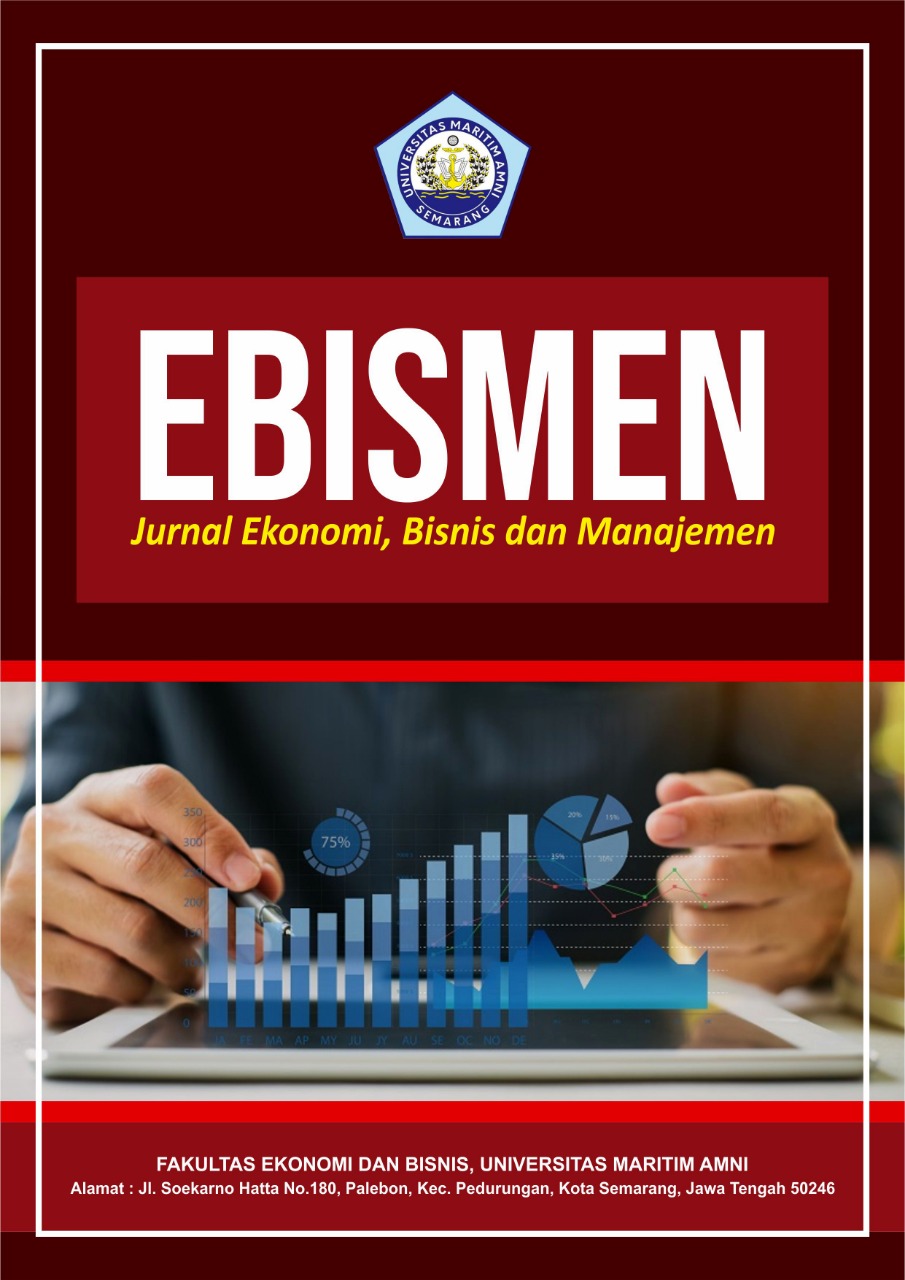Pengukuran Kinerja Usaha Menggunakan Metode Balanced Scorecard
(Studi Kasus Pada CV XYZ)
DOI:
https://doi.org/10.58192/ebismen.v4i1.3170Keywords:
Balanced Scorecard Method, Business Performance Measurement, Customer Acquisition, Customer Complaints, Error RateAbstract
This study aims to measure the business performance of CV XYZ through the perspectives of finance, customers, internal business processes, growth and learning of the balanced scorecard method at CV XYZ in 2023. The data used is primary data, in the form of data from interviews with CV XYZ managers or those who have authority over CV XYZ business performance data. The results of the study can be concluded that based on research on the financial perspective, the results of the calculation of current ratio, revenue growth, debt to total assets, debt to equity, return on equity, return on assets and net profit margin get “good” criteria. In the customer perspective, the results of the calculation of customer retention get “sufficient” criteria, while the results of the calculation of customer acquisition and customer complaints get “good” criteria. In the internal business process perspective, the results of the calculation of minimize error rate and rework, and agreements with third parties get the “good” criteria. In the growth and learning perspective, the results of the calculation of employee retention get the criteria “sufficient”, employee training gets the criteria “good” and absenteeism gets the criteria “not good”.
References
Badan Pusat Statistik (BPS). (2023). Statistik UMKM di Provinsi Lampung. BPS Provinsi Lampung.
Budiarti, R. (2007). Evaluasi kinerja perusahaan dengan balanced scorecard. Jurnal Manajemen Strategi Bisnis, 3(1), 45–60.
Farida, I., Sunandar, & Aryanto. (2019). Faktor-faktor yang berpengaruh terhadap kinerja UMKM di Kota Tegal. Jurnal Monex, 8(2), 79–82.
Ghozali, I. (2018). Aplikasi analisis multivariate dengan program IBM SPSS 25. Semarang: Universitas Diponegoro.
Husain, R. A., & Pura, R. (2021). Pengaruh aspek pengukuran kinerja dalam balanced scorecard terhadap daya saing perusahaan PDAM Kota Makassar. Jurnal Akuntansi dan Ekonomi, 6(1), 66–74.
Kaplan, R. S., & Norton, D. P. (2000). Balanced scorecard: Menerapkan strategi menjadi aksi. Erlangga.
Komisi Pengawas Persaingan Usaha (KPPU). (2023). Kinerja lima tahun anggota KPPU periode IV.
Kuncoro, M. (2011). Strategi bisnis & kinerja perusahaan. Jakarta: Gramedia Pustaka Utama.
Mulyadi, D. (2016). Pengukuran kinerja dengan balanced scorecard di sektor UMKM. Jurnal Ekonomi dan Bisnis Indonesia, 11(3), 175–190.
Pandaleke, R. B., Tinangon, J. J., & Wangkar, A. (2021). Penerapan balanced scorecard sebagai alternatif pengukuran kinerja pada PT. Bank Sulutgo Cabang Ratahan. Jurnal EMBA, 9(3), 1018–1028.
Pratiwi, M. A. (2022). Analisis evaluasi kinerja UMKM dengan metode balanced scorecard (Studi kasus Bintan Snack Millenium). Jurnal Manajerial dan Bisnis Tanjungpinang, 4(2), 149–158.
Saputri, Indra, & Ip. (2021). Pengaruh pengukuran balance scorecard terhadap kinerja perusahaan (Studi kasus PT. Indo Veneer Utama). Jurnal Akuntansi dan Pajak, 22, 204–216.
Sugiyono, D. (2013). Metode penelitian kuantitatif, kualitatif, dan tindakan.
Susanto, B. (2013). Pengukuran kinerja organisasi menggunakan balanced scorecard (Studi kasus pada PT. Wijaya Karya BetonTbk Kantor Cabang Pasuruan). Jurnal Artikel Ilmiah Mahasiswa, 1–9.
Undang-Undang Republik Indonesia Nomor 20 Tahun 2008. Undang-Undang tentang UMKM Republik Indonesia Nomor 20 Tahun 2008.
Wibowo, E. W. (2018). Kajian analisis kinerja usaha mikro kecil menengah (UMKM) dengan menggunakan metode balanced scorecard. Jurnal Lentera Bisnis, 6(2), 25.
Downloads
Published
How to Cite
Issue
Section
License
Copyright (c) 2025 Jurnal Ekonomi, Bisnis dan Manajemen

This work is licensed under a Creative Commons Attribution-ShareAlike 4.0 International License.







